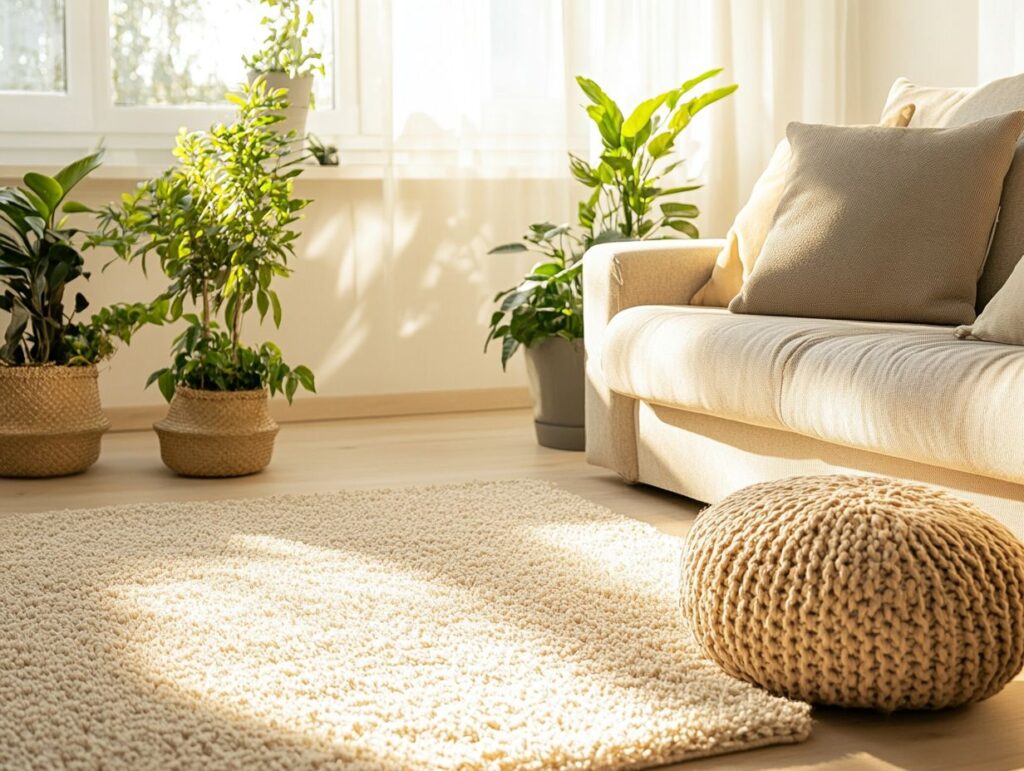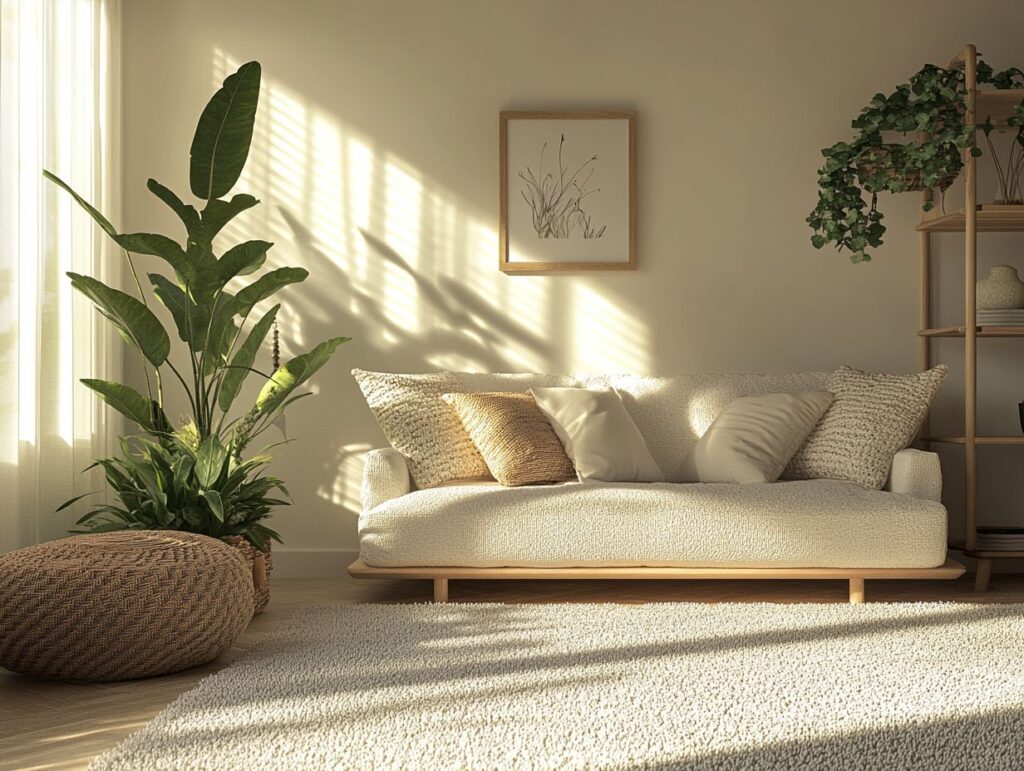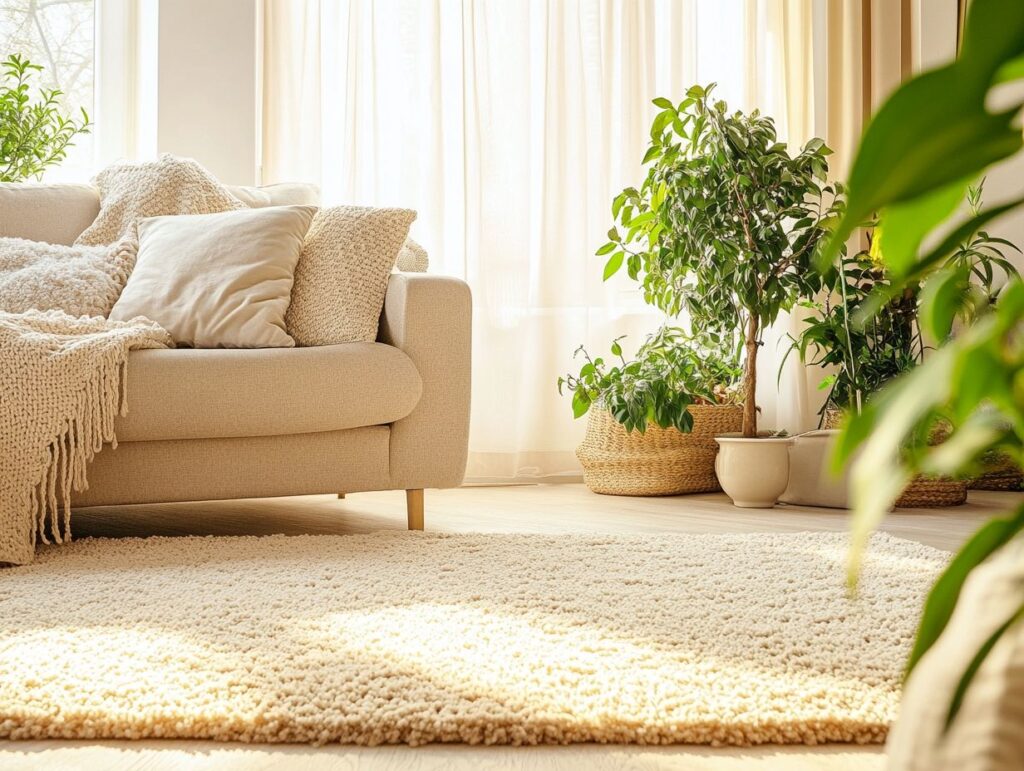Are you sick (no pun intended) and tired of sneezing and sniffing in your own home? Indoor allergens can make everyday life a challenge for many allergy sufferers, and carpets can play a significant role in trapping dust, pet dander, and other irritants.
This article explores the connection between carpets and allergies, discusses what makes a carpet hypoallergenic, and highlights top options to help mitigate your symptoms. We will also give you some essential maintenance tips and additional strategies to create a healthier living environment.

The Link Between Carpets and Allergies
Carpets can affect the air quality in your home, which is very important if you’re someone who suffers from allergies. Many people don’t realise that the materials in their carpets can trap allergens like dust mites, pet dander, and mould spores, exacerbating asthma and allergy symptoms.
By opting for hypoallergenic carpets or low-allergy options, you can create a healthier living space that feels more comfortable and easier for your allergies. Understanding how carpets and allergies are connected is key to keeping your home health-conscious and allergy-friendly.
Understanding Indoor Allergens
Indoor allergens like dust mites, mould spores, and pet dander can be troublemakers. They trigger allergic reactions and make asthma symptoms worse for sensitive individuals.
These allergens love to hang out in warm, moist environments, so your bedrooms and living areas are prime locations. Take dust mites, for example—they’re tiny creatures that set up home in your bedding, upholstery, and carpets, feasting on those human skin flakes we all shed. Mould has a knack for thriving in damp spots, and its spores can interfere with your respiratory system. As for pet dander? Those tiny bits of skin and saliva can linger on surfaces and float through the air, causing allergies to flare up.
Invest in dust mite-resistant covers and choose breathable fabrics to tackle these annoying issues. Doing so can significantly improve allergy management and create healthier indoor spaces for everyone.

What Makes a Carpet Hypoallergenic?
A carpet is labelled hypoallergenic when designed to keep allergens at bay and lower the chances of triggering allergic reactions, especially for sensitive people.
You can achieve this by choosing specific carpet materials, hypoallergenic fibres, and features that help improve indoor air quality.
Materials and Features to Look For
Choosing the right materials for hypoallergenic carpets that keep your home comfortable and safe.
Selecting carpets made from specific fibres can reduce allergens and create a healthier living space. Natural fibres like wool are often praised for repelling dust mites and resisting mould, making them a top choice for anyone with allergies.
Now, synthetic options like nylon or polyester might be easier on the purse, but they don’t usually offer the same benefits. If you’re eco-conscious, you might want to check out carpets made from organic materials or recycled content. And don’t forget about latex-free carpets if you have sensitivities.
You can find the perfect mix of functionality and health for your home by carefully weighing these options.

Top Hypoallergenic Carpet Options
When choosing hypoallergenic carpets, you’ll find several options that reduce allergens and enhance indoor comfort.
Natural Fiber Carpets
Natural fibre carpets, like those made of wool, aren’t just eco-friendly; they’re also fantastic for allergy relief. Thanks to their breathability and resistance to dust mites, they help keep your space fresh.
If you’re looking for a healthier living environment, these carpets are a great choice since they help minimise allergens in your home. Their sustainable materials are biodegradable, making them a smart pick for anyone wanting to lower their carbon footprint.
Natural fibres offer luxurious comfort that synthetic options can’t match. They give you that cosy feel underfoot and enhance the look of any room. By choosing these carpets, you’re transforming your space into a welcome haven and fostering an eco-friendly home that values well-being and sustainability.
Low-Pile Synthetic Carpets
Low-pile synthetic carpets are a great choice for people with allergies. They are designed to reduce allergen buildup while still being durable and easy to maintain.
With their sleek texture, these carpets resist stains and make cleaning up a doddle, which is particularly handy if you have children or pets running about. The tightly woven fibres keep dust mites and pet dander from settling in too deeply, helping to reduce your exposure to those pesky allergens.
Additionally, synthetic materials often come with built-in stain resistance so spills can be wiped away without fuss. This combination of easy maintenance and allergen reduction makes low-pile synthetic carpets a practical option if you’re looking for a cleaner, healthier living space without compromising on comfort or style.
Carpet Tiles
Carpet tiles are a fantastic modular flooring option that is easy to install and maintain. They’re also hypoallergenic.
Whether you’re sprucing up a home or a commercial space, these easy-to-install carpets come in various styles, colours, and textures, giving you endless choices for your flooring needs. Their versatility shines in high-traffic areas since you can rearrange or replace individual tiles without redoing the whole floor.
Additionally, the hypoallergenic design helps minimise dust and allergens, creating a healthier environment for everyone. With options that fit modern and classic aesthetics, it’s no wonder many people choose this adaptable flooring solution to meet their specific needs.
Maintaining a Hypoallergenic Carpet
Proper carpet maintenance is key to ensuring your hypoallergenic carpets continue to reduce allergens and promote a healthy indoor environment.
Cleaning and Care Tips
Using the right carpet cleaning methods protects your hypoallergenic carpets from allergens and odours.
These methods help your flooring last longer and significantly contribute to creating a healthier indoor environment. Regular vacuuming is essential; using a vacuum with a HEPA filter can capture those pesky allergens that regular vacuums might miss. Establishing a vacuuming routine that targets high-traffic areas helps prevent dirt and debris from settling deep into the fibres.
Opting for washable rugs can be a sensible move since they’re easy to clean and can be laundered regularly to remove dust and allergens. Pairing these rugs with quality carpet underlay enhances comfort while offering extra protection against wear and tear.
Other Ways to Reduce Allergens in Your Home
In addition to choosing hypoallergenic carpets, you have numerous other effective strategies for reducing allergens and enhancing the indoor air quality in your home.
Additional Strategies for Allergy Relief
Implementing extra allergy relief strategies boosts indoor comfort and helps minimise exposure to allergens in your home.
One effective approach is to install HEPA filters. These devices are designed to capture even the tiniest particles that can trigger allergic reactions.
Consider pet-friendly carpets made from sustainable materials. These not only reduce allergen buildup but also promote a healthier indoor environment. Additionally, they help decrease dirt mites and pet dander while adhering to eco-friendly design principles.
By prioritising these choices, you can create a sanctuary that looks good and feels good, making it easier for everyone to breathe and enjoy their space.